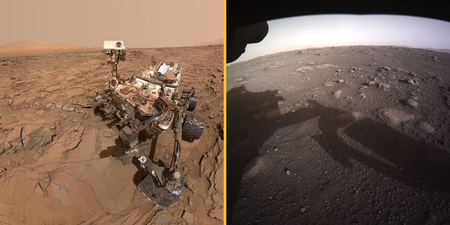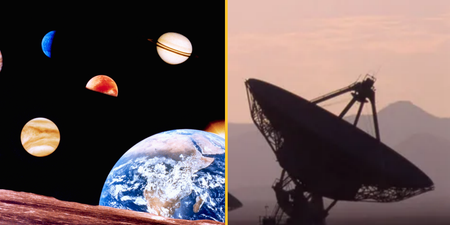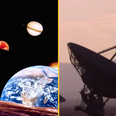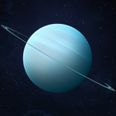The sunspot is three times the size of planet Earth
A huge sunspot has doubled in size in just 24 hours, and a significant solar flare is now pointing towards Earth.
Sunspots are dark, planet-size regions of strong magnetic fields on the surface of the sun, as Space.com explains. They can produce eruptive disturbances such as solar flares and Coronal Mass Ejections (CMEs).
This particular sunspot, also known as AS3038, is three times the size of our planet.
A giant sunspot the size of 3 Earths is facing us right now https://t.co/nlcWzVSsjK pic.twitter.com/Z8ZZRB88tE
— SPACE.com (@SPACEdotcom) June 22, 2022
Writing on SpaceWeather.com on Wednesday, author Tony Phillips said: “Yesterday, sunspot AR3038 was big. Today, it’s enormous.”
And the sunspot could send out medium strength M-class solar flares towards Earth, experts say.
As the European Space Agency explains, a solar flare is a “tremendous explosion” that happens on the Sun, when energy stored in ‘twisted’ magnetic fields (usually above sunspots) is suddenly released.
It was only back in April a warning was issued by NASA after the Sun sent out its strongest solar flare in half a decade, Metro reports. But even though it was an ‘X-class’ flare, the strongest rank which can cause serious disruption, it did not cause a whole lot of damage.
Today's X2.2 solar flare is the strongest solar flare of the current Solar Cycle thus far. It peaked at 03:57 UTC and came from sunspot region 2992 which is rounding the western limb. The eruption was fairly impulsive and the resulting CME is not earth-directed. pic.twitter.com/Aq38bXuFnA
— SpaceWeatherLive (@_SpaceWeather_) April 20, 2022
Thankfully, this means that the ‘M-class’ flare, which is of medium size, can only cause low-level damage, and is unlikely to be of any danger either.
Speaking to USA Today News, Rob Steenburgh, lead of the NOAA’s Space Weather Forecast Office, said: “The sunspot’s size and growth rate are fairly normal. This is what sunspots do. Over time, generally, they’ll grow. They go through stages, and then they decay.”
Huge sunspot group AR3038 imaged this afternoon through a brief sucker hole in the clouds. AR3038 has doubled in size over the last 24 hours! pic.twitter.com/rSl2dS6YFK
— David Hoskin (@d_hoskin) June 20, 2022
Excitingly, AS3038 could cause a Coronal Mass Ejection (CME) – a large expulsion of plasma and magnetic field from the sun’s atmosphere.
CMEs are also normally harmless – except for occasionally causing brief radio blackouts and, on more rare occasions, disturbing infrastructure like power lines or satellites.
But this could, in turn, give humans the chance to see the sky lit up with aurora – an electrical phenomenon characterised by the appearance of streams of reddish or greenish light in the sky.
The Space Weather Prediction Centre at NASA (the National Aeronautics and Space Administration) is yet to issue an aurora alert.
Related stories:
- Astronomers discover new planetary system near Earth and are ‘optimistic’ about habitable worlds
- Kate Bush’s Running Up That Hill tops UK chart thanks to Stranger Things
- Elon Musk set to become world’s first trillionaire by 2024, because the world really needed one





















































